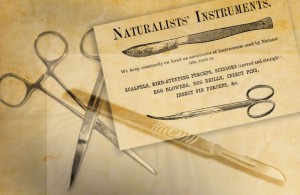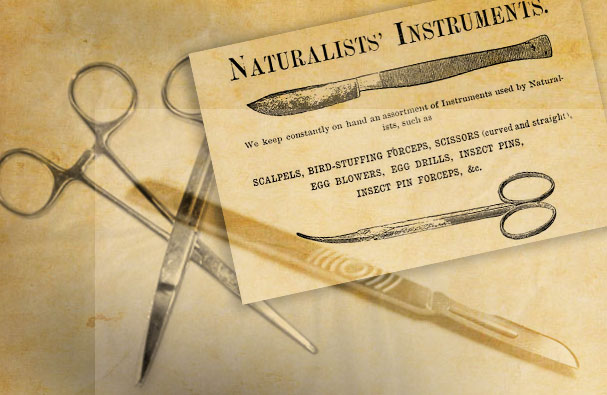 An animal skin goes through a lot of steps before it becomes a finished taxidermy mount, and each one of these requires certain tools. While some applications, like birds or some fish, might require more specific tools, there are a few general types of items that every taxidermist should be familiar with.
An animal skin goes through a lot of steps before it becomes a finished taxidermy mount, and each one of these requires certain tools. While some applications, like birds or some fish, might require more specific tools, there are a few general types of items that every taxidermist should be familiar with.
The first, and probably the most obvious, is a good pair of safety glasses. A lot of the solutions used to clean and preserve hides can do some serious damage if they come in contact with your eyes, so no part of skin cleaning or preserving should be undertaken without them. Similarly, rubber aprons and latex gloves should be worn at all times.
After that, cutting implements like scissors, scalpels, exacto blades, filleting knives, fleshing tools, and even sharpened spoons are key, not only for removing the hide from the body, but for removing the clinging bits of flesh and soft tissue from the skin. Sharpened spoons or specialized fleshing tools can be (carefully) scraped along the inside of the unpreserved skin to loosen and remove remaining bits of muscle tissue, and prepare the skin for the tanning process. The type of knife needed to remove the skin depends not only on the size of the animal or area of the body, but on the species. Some animals have flesh which is delicate and easily torn, and a suitably delicate knife (like an exacto or scalpel blade) is required.
Plastic buckets, bowls, and measuring cups are important for tanning, since these will be needed to hold different cleaning, degreasing, and tanning solutions. Everything from recycled plastic paint buckets to the plastic bowls that hold margarine or whipped topping can be used for measurement and storage.
Once the tanning process is complete, then things like needles, thread, and glue are needed. Monofilament fishing line and even dental floss can be used to sew up a hide, while caulk, hot glue, and superglue will all be needed at some point during the mounting process. The right needles are critical- regular sewing needles will break, while needles that are too large will punch obvious holes in the hide, that can tear through later. Glue is also necessary for affixing things like eyes and teeth.
After mounting, things like hair brushes or chamois cloths are needed to help neaten a mammal’s coat to restore a realistic appearance, while toothbrushes, combs, and pet brushes can be used to straighten the feathers out on a bird specimen. Fish have their own problems to consider, and, while they won’t need to be brushed, will most likely require painting to regain the bright colors they had in life. So, for fish taxidermists, tools like oil panting kits or airbrushes are also key.
Some professionals might swear by one knife, or one type of glue, while others will prefer different ones. As a taxidermy hobbyist becomes more experienced with learning their craft, they’ll develop their own preferences for which tools they prefer to use in which situation.

